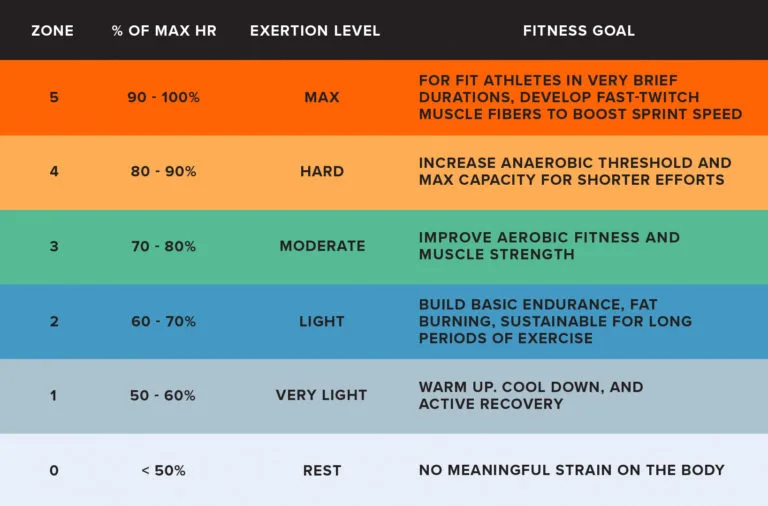In the world of fitness, there’s a zone that often goes unnoticed amidst the hype of high-intensity workouts and flashy training programs. It’s called Zone 2, and within its subtle realm lies a hidden gem of cardio training that promises not just physical transformation, but a holistic journey towards health and well-being. In this comprehensive guide, we delve into the magic of Zone 2 cardio, exploring its benefits, principles, and how to harness its power for optimal fitness.
Why should you do cardio in the first place?
Cardiovascular exercise or cardio, is crucial for:
- maintaining heart health
- improving circulation
- boosting metabolism
- managing weight
- reducing stress
- enhancing overall well-being.
It strengthens the heart muscle, lowers blood pressure, and increases lung capacity, promoting longevity and reducing the risk of chronic diseases like heart disease, diabetes, and stroke. Additionally, cardio helps improve mood by releasing endorphins, which can alleviate symptoms of anxiety and depression.
Different kinds of cardio
Cardio is not just running. There are so many forms of cardio you can do. Here are some of the most know forms of cardio:
- Running / Jogging
- Cycling
- Swimming
- Walking
- Rope jumping
- Rowing
- Dancing
- Boxing
- Stair climbing
The most important aspect of choosing a cardio is, that you have fun doing it as well as you won’t get bored of it in the future.
What are cardio Zones?
The different zones of cardio, often referred to as heart rate zones, are ranges of heart rates that correspond to varying levels of exercise intensity. These zones are commonly used to guide and monitor workouts, allowing individuals to tailor their training to achieve specific fitness goals. Here’s a breakdown of the different cardio zones:
 Credit: Whoop
Credit: Whoop
Zone one – very light
This zone corresponds to heart rates ranging from 50-60% of your maximum heart rate. It is characterized by light exercise intensity, where you can easily maintain a conversation and sustain the activity for an extended period. For warm-up and cooldown periods, as well as active recovery between more intense workouts Zone 1 is ideal .
Zone two – Moderate
Zone 2 encompasses heart rates between 60-70% of your maximum heart rate. It represents a comfortably challenging intensity level where you can still talk comfortably but may start to break a sweat. This zone is excellent for building aerobic endurance, burning fat, and improving cardiovascular health.
Zone three – Hard
Zone 3 corresponds to heart rates ranging from 70-80% of your maximum heart rate. It represents a challenging intensity level where breathing becomes deeper, and conversation becomes difficult. This zone improves aerobic capacity, increases calorie burn, and enhances overall fitness.
Zone four – very hard
Zone 4 encompasses heart rates between 80-90% of your maximum heart rate. It represents a very high intensity where you’re pushing your limits, breathing heavily, and feeling significant fatigue. This zone is effective for improving anaerobic fitness, increasing speed and power, and pushing through performance plateaus.
Zone five – maximum effort
Zone 5 corresponds to heart rates above 90% of your maximum heart rate. It represents maximum exertion, where you’re working at your absolute limit and can only sustain the effort for short bursts. This zone is typically utilized during interval training or high-intensity efforts such as sprints or hill climbs.
Understanding Zone 2 Cardio
Zone 2 cardio refers to exercising at a moderate intensity where your heart rate falls within a specific range—typically around 60-70% of your maximum heart rate. This zone is often described as a „comfortably hard“ effort level, where you can sustain a conversation without gasping for breath, yet still feel challenged. Unlike high-intensity workouts that push you to your limits, Zone 2 training focuses on building aerobic endurance and improving overall cardiovascular health.
The benefits of Zone 2 Cardio
Improved Aerobic Fitness
By consistently training in Zone 2, you strengthen your aerobic energy system, enhancing your body’s ability to utilize oxygen efficiently during exercise. This translates to better endurance and stamina, allowing you to go further and longer with less fatigue.
Fat Burning
Zone 2 cardio is renowned for its fat-burning potential. When you exercise at a moderate intensity, your body primarily relies on fat as a fuel source, making it an effective strategy for weight management and body composition.
Reduced Risk of Injury and Burnout
Unlike high-intensity workouts that can place excessive stress on your joints and muscles, Zone 2 training is gentler on the body, reducing the risk of injury and burnout. It provides a sustainable approach to fitness that you can maintain over the long term.
Enhanced Recovery
Engaging in low-intensity exercise promotes recovery by increasing blood flow to tired muscles and flushing out metabolic waste products. Zone 2 cardio can serve as an active recovery tool between more intense training sessions, helping you bounce back faster and feel fresher.
Mental Clarity and Stress Relief
Zone 2 workouts offer a perfect balance between exertion and relaxation, providing a mental escape from the stresses of daily life. The rhythmic nature of aerobic exercise can be meditative, promoting mental clarity and reducing anxiety.
Summary
Zone 2 cardio is more than just a workout: it’s a journey towards optimal health and well-being. By embracing the principles of Zone 2 training—moderation, consistency, and mindfulness—you can unlock the transformative power of aerobic exercise and embark on a path to lasting fitness.
So, the next time you lace up your sneakers or hop on your bike, consider venturing into the realm of Zone 2 cardio. Embrace the rhythm of your breath, the beat of your heart, and the beauty of movement as you embark on this journey towards a stronger, healthier, and happier you.
If you liked this post, the following blog posts could be interested: